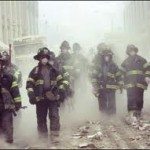Courtesy of Philip J. Landrigan, MD, MSc, Principal Investigator for Mount Sinai’s WTC Medical Monitoring and Treatment Program. Founding and Honorary Board Member of Healthy Child Healthy World.

The attacks on the World Trade Center (WTC) on September 11, 2001 (9/11) created an environmental disaster of unprecedented scale for the New York area, says a new study published in the Lancet. Led by CEHC’s Philip J. Landrigan, MD, MSc, who also serves as the Principal Investigator for Mount Sinai’s WTC Medical Monitoring and Treatment Program, this study found that rescue and recovery workers continue to experience substantial physical and mental health problems.
“At the 10-year point after 9/11, we’re still seeing a great deal of persistent disease in the first responders, the police, the firefighters, and the construction workers,” Dr. Landrigan told U.S. News and World Reports.
After examining over 27,000 rescue and recovery workers, Dr. Landrigan’s team found that close to 28% had asthma, 42% had sinusitis, and 39% had gastro-esophageal reflux disease (GERD).

Of the police officers studied, 7% experienced depression, 9% had PTSD, and almost 8.5% experienced panic disorder. Other rescue and recovery workers experienced larger effects — 27% experienced depression, 32% had PTSD, and 21% experienced panic disorder.













